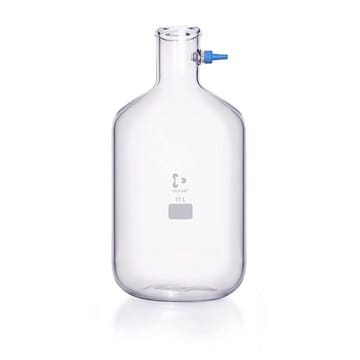424641
Disulfuro de carbono
ReagentPlus®, purified by redistillation, ≥99.9%
Seleccione un Tamaño
Seleccione un Tamaño
About This Item
Productos recomendados
grado
reagent
densidad de vapor
2.67 (vs air)
presión de vapor
5.83 psi
Línea del producto
ReagentPlus®
Ensayo
≥99.9%
Formulario
liquid
temp. de autoignición
212 °F
purificado por
redistillation
lim. expl.
50 %
dilution
(for general lab use)
impurezas
≤0.03% (water)
≤1.5 ppm hydrogen sulfide
≤2.5 ppm sulfur dioxide
<100 ppb benzene (No single impurity > 100 ppb, measured as benzene)
<500 ppb total hydrocarbon content
color
APHA: ≤10
índice de refracción
n20/D 1.627 (lit.)
bp
46 °C (lit.)
mp
−112-−111 °C (lit.)
solubilidad
alcohol: miscible(lit.)
benzene: miscible(lit.)
densidad
1.266 g/mL at 25 °C (lit.)
cadena SMILES
S=C=S
InChI
1S/CS2/c2-1-3
Clave InChI
QGJOPFRUJISHPQ-UHFFFAOYSA-N
¿Está buscando productos similares? Visita Guía de comparación de productos
Descripción general
Aplicación
Información legal
Palabra de señalización
Danger
Frases de peligro
Clasificaciones de peligro
Acute Tox. 4 Inhalation - Eye Irrit. 2 - Flam. Liq. 2 - Repr. 2 - Skin Irrit. 2 - STOT RE 1
Órganos de actuación
Peripheral nervous system,Central nervous system,Cardio-vascular system,Eyes
Código de clase de almacenamiento
3 - Flammable liquids
Clase de riesgo para el agua (WGK)
WGK 2
Punto de inflamabilidad (°F)
-22.0 °F - closed cup
Punto de inflamabilidad (°C)
-30 °C - closed cup
Elija entre una de las versiones más recientes:
¿Ya tiene este producto?
Encuentre la documentación para los productos que ha comprado recientemente en la Biblioteca de documentos.
Active Filters
Nuestro equipo de científicos tiene experiencia en todas las áreas de investigación: Ciencias de la vida, Ciencia de los materiales, Síntesis química, Cromatografía, Analítica y muchas otras.
Póngase en contacto con el Servicio técnico






